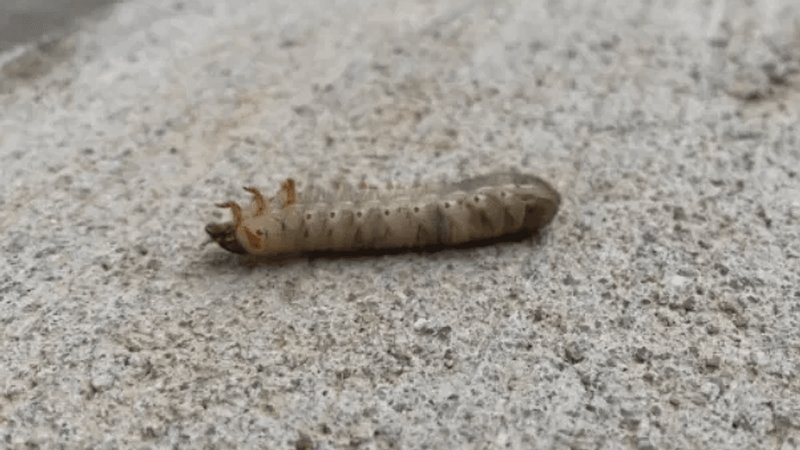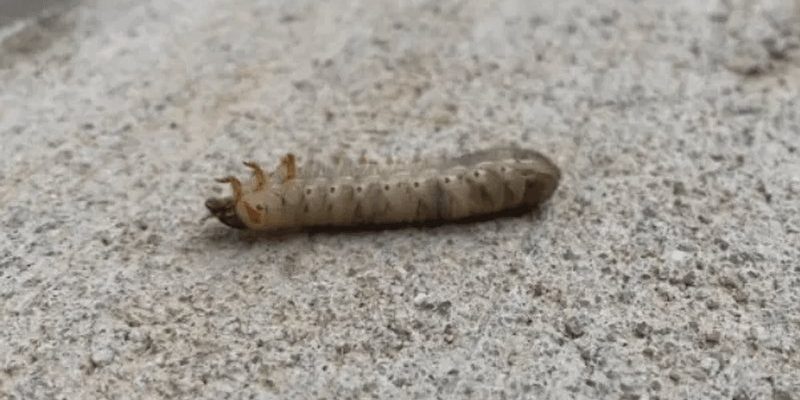
Grub worms, particularly those pesky larvae of beetles like Japanese beetles and June bugs, often emerge in greater numbers following heavy rains. It’s like they’ve been waiting for the right cue to come out and play. But why does this happen? Let’s dig deeper into the connection between grub worms and rainfall patterns.
What Are Grub Worms, Anyway?
Grub worms are the larvae of various beetles. They spend their early life underground, munching away on the roots of grass and plants. Typically white or off-white, they can be hard to spot unless you’re really looking. Picture them as the “teenagers” of the insect world; they grow and develop underground until they’re ready to transform.
One of the most common types of grub worms are the larvae of the Japanese beetle. They are known for causing substantial damage to lawns and gardens. These little guys can wreak havoc if left unchecked, so it’s essential to understand when they’re most likely to appear.
When it rains heavily, grub worms become more prevalent. Why, you ask? Well, the moisture does a few things. First, it softens the soil, making it easier for them to move about. Second, it provides the hydration they need to survive. Think about it—rain creates a more inviting environment for these squishy larvae.
How Heavy Rain Affects Grub Worm Populations
Heavy rain can influence the lifecycle of grub worms. During a rain event, the larvae can surface and feed more easily, thanks to the loosened soil. This means not only can they move around without getting stuck, but they also have access to lush, wet grass roots. More moisture means more food, and who doesn’t want that when they’re hungry?
Additionally, if a heavy rain falls after a dry spell, it can promote grass growth. More grass means more roots for the grubs to nibble on. So, when you’re seeing those bright green lawns sprouting up, remember that it’s a banquet for the grub worms.
It’s essential to realize that the moisture from rain can also encourage the mating of the adult beetles, which leads to more eggs being laid in the soil. This chain reaction can result in a significant increase in grub worm populations.
Signs of Grub Worm Infestation
You might be wondering how to tell if your yard has a grub worm problem. There are a few telltale signs to look for:
- Brown patches: Areas of grass turning brown or dying can indicate root damage from grub worms.
- Easy-to-pull grass: If your grass comes up easily when tugged, that could mean grubs are snacking on the roots.
- Animal activity: Look for signs of birds, raccoons, or skunks digging in your yard. They often feast on grub worms.
These signs can be your early alert system. If you notice any of them, it might be time to investigate further.
Preventing Grub Worms After Heavy Rains
So, how do you keep grub worms at bay, especially after a downpour? Here are a few proactive steps:
1. **Maintain Healthy Soil:** Healthy grass is more resilient against pests. Aerate your lawn regularly to keep the soil loose and promote healthy root growth.
2. **Fertilize Wisely:** Applying organic fertilizers can help strengthen the grass, making it less appealing for grub worms.
3. **Water Smartly:** Avoid over-watering your lawn. While grub worms love moisture, soggy soil can lead to other problems, like root rot.
4. **Introduce Beneficial Nematodes:** These microscopic creatures act like little soldiers against grubs. They can invade and kill grub worms, helping keep their populations in check.
By taking these preventive steps, you can make your lawn less inviting for grub worms, even after those heavy rains.
Using Natural Predators for Control
Another effective strategy is to encourage natural predators of grub worms in your yard. Birds and beneficial insects can help balance the ecosystem.
For example, introducing certain bird feeders and baths can attract more birds to your yard, creating a natural pest-control army. You might also consider planting flowers that attract predatory insects, such as parasitic wasps, which can help keep grub populations down.
By understanding that you’re not just battling pests but working to create a vibrant ecosystem, you can find more sustainable solutions.
When to Consult a Professional
If you feel overwhelmed by your grub worm problem, or if their population is particularly severe, it might be time to call in the experts. Professional pest control services have access to tools and treatments that can effectively manage infestations.
They can help assess your situation and provide tailored solutions. Sometimes, it just takes a few targeted applications to keep the grub worms under control without a full garden overhaul.
To wrap it up, yes, grub worms can indeed become more common after heavy rains. The moisture creates the perfect conditions for them to thrive and reproduce. You’ve probably seen the signs of their presence—brown patches, soft grass, and increased animal activity.
But don’t worry! By maintaining a healthy lawn, staying vigilant, and using natural or professional solutions, you can manage the grub worm population effectively. After all, a thriving garden is a happy garden. Just remember: a little rain can make a big difference!

